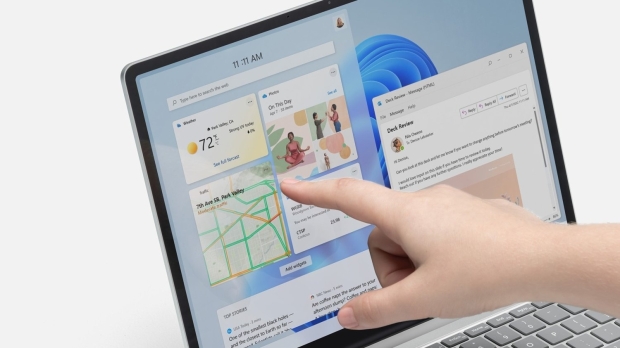ADATA's new SC750 External SSD shows us the future of USB thumb drives
USB sticks, thumb drives, and tiny portable storage devices that can fit on a keychain and move more quickly from device to device have been staples for what feels like decades. These storage devices have been affordable for quite some time; however, their capacities and relatively slow speeds have made them feel less relevant.
ADATA's new SC750 External SSD is looking to change that because it's a cable-free external SSD roughly the size of a traditional USB thumb drive - with the bonus of read and write speeds of 1,050 and 1,000 MB/s, respectively. As a portable SSD, you've got much larger 500GB and 1TB capacities.
The speed and space offered by ADATA's new SC750 External SSD make it fast and compact enough to connect to an iPhone and record Apple ProRes image files directly to the SSD. It weighs only 11 grams.
Continue reading: ADATA's new SC750 External SSD shows us the future of USB thumb drives (full post)
Fallout: London available now, impressive DLC-sized mod launches after several delays
Fallout: London, the ambitious and impressive-looking DLC-sized mod from Team FOLON, is finally available and free for all who own Fallout 4 with all of its DLC or the Game of the Year Edition on GOG or Steam. Due to the size of the mod (it weighs in at a hefty 33.8 GB) and is a brand-new game set in the Fallout universe, it's being distributed via GOG. You can check out the official store page for it here.
The size is one reason it's currently PC-only and unavailable for consoles. Another (and why the release was delayed) is that it requires you to downgrade Fallout 4 to the pre-Next-Gen version of the game. However, the development team is open to working with Bethesda and Xbox to make it available as a standalone release on Xbox consoles.
As the name suggests, Fallout: London takes place in a post-apocalyptic London, taking the series from its American-based setting to the wider world for the first time. With this, there are new weapons, factions, stories, London-centric items, art, and futuristic oddities to experience. Instead of the Pip-Boy, there's the Atta-Boy, alongside clothing, items, collectibles, architecture, foliage, and NPCs to suit the London setting.
Monopoly Go! has made $3 billion in little over a year
Monopoly Go! remains one of the best-earning mobile games available today with over $3 billion revenues since release, Hasbro today announced.
Hasbro and Scopely are making tons of cash from Monopoly Go!, the free-to-play sensation that has quickly become one of the quickest-earning new mobile games. In a recent Q2 earnings report, Hasbro CEO Chris Cocks said that Monopoly Go! has made in excess of $3 billion in total in lifetime revenues, up an incredible $1 billion since last quarter.
In just 14 months, this single mobile game has made nearly half as much money as Electronic Arts' entire business throughout FY24 ($7.1 billion).
Continue reading: Monopoly Go! has made $3 billion in little over a year (full post)
Bethesda Game Studios votes to unionize, over 1,750 games workers now unionized under Microsoft
The majority of developers at key Bethesda Game Studios have voted to unionize, becoming the first "wall-to-wall" union under Microsoft.
Bethesda's core game development studios have unionized under the Communication Workers of America (CWA), including BGS' headquarters in Rockville, Maryland alongside its satellite studios in Austin and Dallas. The company's Montreal-based studio also seeking unionization at the CWA's Canadian branch.
This marks a historic occasion as Bethesda was the initial group to form a solidified union under Microsoft, with the union encompassing all disciplines at the billion-dollar games group. Combined with the recently-formed union at Blizzard, the CWA now represents over 1,750 Microsoft game workers.
Your Top Gaming Destinations - Choose Wisely
In the vast and immersive world of gaming, the allure of experiencing your favorite games in a real-world setting is an enticing prospect. Gamers are not just confined to their consoles and PCs; many seek out the ultimate gaming experiences in vibrant cities around the globe. These destinations offer unique cultural experiences, state-of-the-art gaming centers, and events that bring virtual adventures to life. If you're looking to level up your gaming journey, here are the top gaming destinations you should consider.
Gaming transcends mere entertainment; it's a form of art, a competitive sport, and a way to connect with people worldwide. The thrill of stepping into different worlds, mastering complex challenges, and competing with others is a universal experience. This passion for gaming is mirrored in various cities that have embraced the gaming culture, offering everything from massive eSports arenas to themed cafes and gaming conventions.
Exploring these cities not only enriches your gaming experience but also allows you to delve into the local gaming culture, meet like-minded enthusiasts, and participate in events that can only be experienced in those locales. Let's take a tour of some of the top gaming hotspots around the world.
Continue reading: Your Top Gaming Destinations - Choose Wisely (full post)
SAG-AFTRA voice and mocap gaming actors strike over AI concerns
Members of SAG-AFTRA's video games branch are advised to strike as negotiations for AI protections hit a wall.
Video game voice and motion-capture actors represented by SAG-AFTRA are called upon to strike, a new announcement has confirmed. The strike comes after 1 1/2 years of negotiations with billion-dollar publishers like Activision and Electronic Arts for guaranteed protections against AI in their contract policies--e.g. how voice and body image captures are used in proprietary AI technologies. The strike will start on July 26 at 12:01am.
"Eighteen months of negotiations have shown us that our employers are not interested in fair, reasonable A.I. protections, but rather flagrant exploitation," Interactive Media Agreement Negotiating Committee Chair Sarah Elmaleh said in the press release.
Continue reading: SAG-AFTRA voice and mocap gaming actors strike over AI concerns (full post)
Blizzard's World of Warcraft team unionizes as devs push back against volatile games market
A full year after Microsoft acquired Activision-Blizzard for $70 billion, and months after Microsoft laid off 1,900 workers across all studios, a core group of Blizzard developers has voted to unionize in an effort to push back against the volatile video games market.
After years of breakout revenues and big spending, the global interactive entertainment industry is currently contracting and pulling back into itself. The goal is simple: Publishers want to reduce costs amid the uncertain economic climate that has driven up basic costs of living for their workers. This has led to mass layoffs across the industry, with tens of thousands of jobs and positions being eliminated.
Amid the tumult, some of the biggest games teams are unionizing in a bid to help bring more stability and bargaining power to the creatives of the $180 billion games market. Yesterday, the Communication Workers of America (CWA) announced that Blizzard's World of Warcraft team has unionized, with over 500 developers voting to form the World of Warcraft Game Makers Guild - CWA Union (WoWGG-CWA) union.
Don't use Google? Then forget about getting useful Reddit posts in your search results
If you don't use Google as your search engine, then you won't get the full benefit of the experience of Redditors when it comes to search results.
This is due to a new agreement between Google and Reddit, and it means that Bing, and other search rivals, will no longer get to plug into Reddit and flag up useful posts on the platform as answers to search queries - or at least not recent posts. Only older content (like 2+ years old, from what we can tell via Bing) will be surfaced from Reddit when using any search engine save for Google, according to a report from The Verge.
It's an important move, because Reddit is a useful source of tips and advice, plus, shall we say, lively debate (mind you - where on the web isn't, these days, when it comes to the latter).
Netflix working on over 80 games, will launch one new 'interactive narrative game' per month
Netflix is working on dozens of new games, but a good portion of them will be "interactive" experiences like Black Mirror's Bandersnatch and Bear Grylls' You vs Wild.
In a bid to engage its core subscribers, Netflix has expanded into gaming, going so far as to acquire whole game studios and develop first-party titles for its service. Right now the gaming initiative is mostly limited to mobile devices, with Netflix even securing the immensely popular Grand Theft Auto franchise for release onto mobile, but the company has developed what it calls "interactive narrative experiences" that are playable on TVs--these vary from basic trivia games to choose-your-own-adventure scripted content.
Now the company has given a quick update on where its gaming plans currently stand. Netflix is making/securing over 80 games right now, but from the sound of it, the bulk of these titles should be the aforementioned interactive experiences that tie viewers to their favorite Netflix IPs.
Microsoft rolls out new Windows 11 update that adds more advertisements to your PC
For quite some time now, some Windows 11 users have been vocal about the seemingly exponential push into "Suggestions" becoming embedded in different regions of the operating system.
Many of these Windows users, including myself for that matter, consider what Microsoft's is calling "Suggestions" as advertisements, and they are seemingly popping up in various places around the operating system. It was only earlier this month that Microsoft stuck with its decision to roll out a new advertisement for Xbox Game Pass within the Start Menu and Settings.
As for the Start Menu update, Microsoft added advertisement placements for Microsoft 365, Xbox Game Pass and OneDrive. These updates are being viewed by many as ways for Microsoft to sell its Windows users on its other products. Luckily, in most cases Redmond allows users to turn off these advertisements, but not always.










